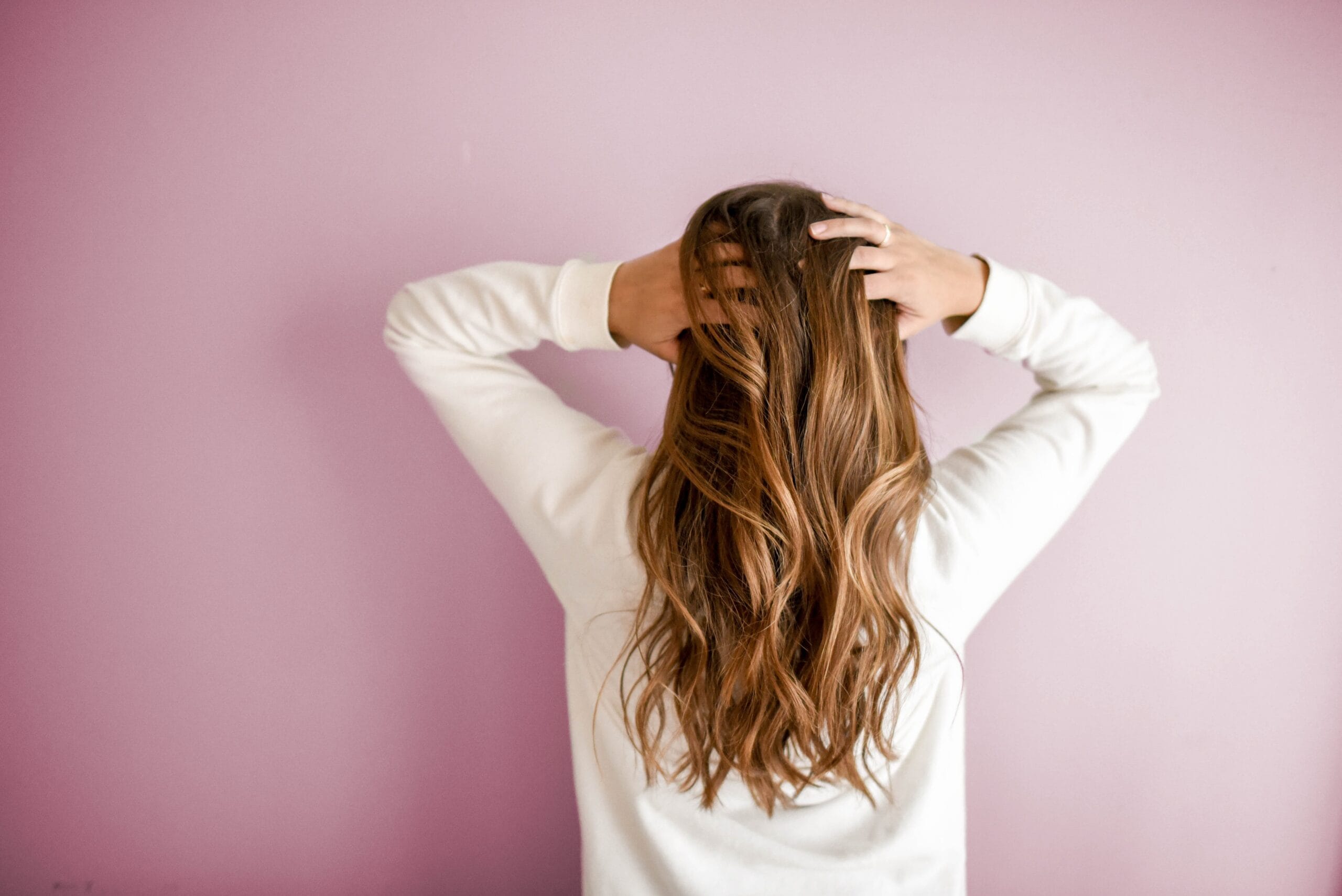In a world where first impressions matter, our hair plays a pivotal role in defining our appearance. A healthy and vibrant mane not only boosts confidence but also reflects overall well-being. The quest for the best hair treatment has led to a myriad of options, each claiming to be the ultimate solution. We delve into the world of best hair treatment, backed by statistics and expert insights, to help you make an informed choice for the crowning glory you deserve.

Best Hair Treatment : Introduction to Hair Loss
Hair loss is a condition that can affect anyone, irrespective of age or gender. It’s a natural phenomenon where individuals typically shed 50 to 100 hairs daily. However, when hair fall exceeds this number, it can lead to thinning or bald patches, known as alopecia. There are various reasons why hair loss occurs, which include genetic factors, hormonal changes, medical conditions, or medications.
- Genetics: Known as androgenetic alopecia, this type of hair loss is hereditary and the most common cause.
- Hormonal Changes: Hair loss can occur due to childbirth, thyroid problems, or menopause, which cause fluctuations in hormone levels.
- Medical Conditions: Conditions like anemia, autoimmune diseases like alopecia areata, and scalp infections can contribute to hair fall.
- Medications: Drugs used for cancer, arthritis, depression, heart problems, and high blood pressure may have the side effect of hair loss.
- Nutritional Deficiencies: A lack of essential nutrients like iron, protein, and vitamins can also affect hair health.
- Stress: Physical or emotional stress can lead to temporary hair thinning.
Hair growth occurs in a cycle, which includes the growth phase (anagen), the transition phase (catagen), and the resting phase (telogen). When this cycle is disrupted, for example, by illness or stress, hair loss may occur.
To accurately diagnose the cause of hair loss, a healthcare professional may perform a physical examination, analyze medical history, and sometimes run tests on scalp samples or blood tests.
Understanding the basics of hair loss is essential for seeking appropriate hair treatment. Recognizing the signs early and identifying the underlying cause can significantly increase the chances of successful treatment. With advancements in medical science, there are a multitude of treatments available that can help mitigate the effects of hair loss or encourage hair regrowth.
Best Hair Treatment : The Science of Hair Growth and Hair Loss
Hair growth involves a complex biological process that is regulated by the hair growth cycle, which comprises three distinct phases: anagen (growth phase), catagen (transitional phase), and telogen (resting phase).
- Anagen Phase: Lasting typically between 2 to 6 years, the anagen phase is when hair strands grow actively from the follicles. The length of this phase determines the maximum length of one’s hair.
- Catagen Phase: This is a brief transitional stage that lasts about two weeks. During the catagen phase, hair growth stops, and the outer root sheath shrinks and attaches to the root of the hair. This is known as a club hair.
- Telogen Phase: Finally, the telogen phase is a resting period lasting around three months. At the end of this phase, the hair falls, and new hair begins to grow, starting the cycle again.
Hair loss, medically termed alopecia, can be affected by a myriad of factors. These include:
- Genetic Predisposition: Androgenetic alopecia, commonly known as male or female pattern baldness, is influenced by genetics.
- Hormonal Changes: Fluctuations in hormones, especially dihydrotestosterone (DHT), can lead to the miniaturization of hair follicles and subsequent hair loss.
- Nutritional Deficiencies: Lack of certain nutrients like iron, protein, and vitamins can hamper hair growth.
- Stress: Physiological stress can cause a large number of hair follicles to enter the telogen phase prematurely, leading to noticeable hair shedding, a condition known as telogen effluvium.
- Medical Conditions and Medications: Some illnesses and drugs can adversely impact the hair growth cycle.
Understanding the root cause of hair loss is essential for determining the most effective treatment method. Treatments that stimulate the anagen phase, mitigate the impact of DHT on follicles, or address nutritional deficiencies can be most beneficial in combating hair loss.
Best Hair Treatment : Assessing the Causes of Hair Loss
Before determining the best hair treatment for hair loss, it is crucial to understand its underlying causes. Hair loss, medically known as alopecia, can be attributed to a variety of factors:
- Genetic Predisposition: Androgenetic alopecia, commonly referred to as male or female pattern baldness, is the most prevalent cause of hair loss, with genetics playing a significant role.
- Hormonal Changes: Conditions such as pregnancy, menopause, and thyroid problems can cause hormonal imbalances that may lead to hair loss.
- Medical Conditions: Diseases such as lupus, anemia, and alopecia areata can contribute to hair thinning or bald patches.
- Medications and Treatments: Certain drugs, including chemotherapy, blood thinners, and medications for high blood pressure, have hair loss as a potential side effect.
- Nutritional Deficiencies: Lack of vital nutrients like iron, protein, and vitamins can hinder hair growth and lead to loss.
- Stress: Both physical and emotional stress can be a trigger for temporary hair loss, known as telogen effluvium.
- Improper Hair Care: Excessive styling, harsh chemical treatments, and general rough handling can weaken hair and increase shedding.
Understanding the specific cause of hair loss is essential in selecting the appropriate treatment. Consulting with a healthcare professional can provide insight into the potential reasons behind an individual’s hair loss and recommend a customized treatment plan. Accordingly, treatments may include topical applications, oral medications, surgical options, or lifestyle modifications, each targeting the root cause of hair thinning or loss.

Hair Transplantation: Types and What to Expect
Hair transplantation is a surgical technique that moves hair follicles from one part of the body, known as the donor site, to a bald or balding part of the body known as the recipient site. This procedure is primarily used to treat male pattern baldness. There are mainly two types of hair transplantation methods:
- Follicular Unit Transplantation (FUT): Also known as strip harvesting, FUT involves removing a strip of skin from the donor area with a good hair density, typically the back of the head. Individual follicular units are then extracted and transplanted to the affected area.
- Pros: Allows for a large number of grafts to be transplanted in a single session.
- Cons: Leaves a linear scar at the donor site.
- Follicular Unit Extraction (FUE): This method involves the individual removal of hair follicles directly from the scalp without the need for a strip of tissue to be removed. Each follicular unit is individually taken from the scalp using small punches.
- Pros: Minimal scarring and faster healing time.
- Cons: Can be more time-consuming and costly than FUT.
When undergoing hair transplantation, individuals can expect several steps:
- Consultation with a specialist to determine the appropriate treatment plan.
- Preparation of the scalp beforehand and administration of local anesthesia.
- The extraction of hair follicles from the donor area.
- Preparation of the grafts for placement.
- The actual implantation of the hair into the thinning or balding areas.
- Post-operative care instructions and follow-up visits.
Healing time varies, with some patients experiencing minor swelling, bruising, and discomfort. Results are not immediate; it takes time for the transplanted hair to grow and blend with existing hair. Satisfactory outcomes may require multiple sessions, especially in cases of significant baldness. Patients considering a hair transplant should have realistic expectations and understand that the goal is to achieve an improvement in hair fullness and not necessarily a full restoration to original hair density.

Best Hair Treatment : Natural Remedies and Supplements for Hair Loss
While medical treatments can be effective for hair loss, many individuals also seek natural remedies and supplements that may improve hair health and reduce shedding. Here’s a closer look at some options:
- Saw Palmetto: Derived from a palm-like plant, saw palmetto is commonly used as a natural treatment for hair loss. It’s thought to help block 5-alpha-reductase, an enzyme that converts testosterone to dihydrotestosterone (DHT), a molecule associated with male pattern baldness.
- Biotin: Biotin (vitamin B7) is famed for its role in supporting hair, skin, and nail health. Biotin deficiencies can lead to hair loss, which is why this supplement is frequently recommended for hair growth. However, it’s important to consult with a healthcare provider before starting biotin, especially in high doses.
- Pumpkin Seed Oil: Some studies suggest that pumpkin seed oil can improve hair count and hair thickness. It is believed to affect the levels of DHT in the scalp.
- Rosemary Oil: When applied to the scalp, rosemary oil has been shown to stimulate hair growth. Some studies suggest its effectiveness could be comparable to minoxidil, a common hair growth medication.
- Omega-3 Fatty Acids: These are found in fish oil and flaxseed oil and are known for their anti-inflammatory effects. Since inflammation can contribute to hair loss, omega-3 supplements may benefit those with inflammatory scalp conditions.
- Iron: In some cases, iron deficiency can be a contributor to hair loss, especially in women. Taking an iron supplement or consuming iron-rich foods may help improve hair health if you are deficient.
It is essential to understand that while these natural remedies and supplements can be beneficial, their efficacy may vary from person to person. As with any treatment, it’s best to consult with a healthcare professional before beginning any supplement or natural remedy to ensure safety and appropriateness for your specific health needs.
Best Hair Treatment : Essential Oils and Topical Applications

When exploring the best hair treatments for hair loss, essential oils used in topical applications deserve attention for their therapeutic properties. These concentrated plant extracts are known for their ability to potentially stimulate hair growth and improve scalp health. Below is a list of some widely used essential oils in hair loss treatments:
- Rosemary Oil: Often hailed for its ability to invigorate hair follicles, rosemary oil is believed to increase cellular metabolism, thereby stimulating hair growth.
- Peppermint Oil: With its cooling sensation, peppermint oil can increase circulation to the scalp and may promote hair growth during the anagen (growing) phase.
- Lavender Oil: Known for its soothing properties, lavender oil not only reduces stress which is a contributing factor to hair loss but also possesses properties that can potentially support new hair growth.
- Tea Tree Oil: Renowned for its antimicrobial properties, tea tree oil can help in keeping the scalp free of infections that might contribute to hair loss.
To maximize the effectiveness of these oils, it is imperative to dilute them with a carrier oil such as coconut oil or jojoba oil to prevent potential irritation. The recommended method for application typically involves massaging the oil blend into the scalp, leaving it on for a period, then washing it out with a gentle shampoo. It’s essential to perform a patch test before using any essential oil widely, to ensure there are no adverse reactions.
It is critical to acknowledge that while these oils can be beneficial, evidence for their efficacy in treating hair loss is largely anecdotic or comes from small-scale studies. Individuals interested in using essential oils as part of their hair loss treatment should consider them as a complementary approach and continue to follow any primary treatments recommended by healthcare professionals.
Scalp Health: Proper Care and Maintenance
Caring for the scalp is a critical factor in treating hair loss and ensuring healthy hair growth. The scalp is the bedrock for hair follicles, and its condition directly affects the health of the hair. Here’s a detailed approach towards proper scalp care and maintenance:
- Keep the Scalp Clean: Frequent washing with a gentle shampoo removes sweat, sebum, and environmental pollutants that can lead to scalp irritation and subsequently hair loss.
- Use Mild Products: Select shampoos and conditioners that are free from harsh chemicals such as sulfates and parabens. Look for products that contain natural ingredients which can nurture the scalp without causing harm.
- Massage Your Scalp: Regular scalp massages increase blood circulation to the hair follicles. A gentle massage for a few minutes daily can stimulate natural hair growth.
- Maintain a Healthy Diet: Nutrition plays a vital role in scalp and hair health. Consuming a balanced diet rich in vitamins and minerals, especially vitamins A, C, D, E, zinc, and omega fatty acids, supports scalp health.
- Avoid High Heat: Excessive use of blow dryers, flat irons, or curling irons can damage the scalp. Use these tools on a low heat setting, and always protect the scalp with a heat protectant product.
- Manage Stress: Chronic stress is often a contributor to hair loss. Employing relaxation techniques such as meditation, yoga, or deep breathing exercises can mitigate stress levels, benefitting scalp health.
- Ditch Bad Habits: Smoking and excessive alcohol consumption can impair blood circulation to the scalp and exacerbate hair loss. Quitting such habits can dramatically improve scalp health.
- Treat Scalp Conditions: Address issues such as dandruff, psoriasis, or seborrheic dermatitis promptly. Left untreated, these conditions can lead to hair thinning or loss.
Proper scalp care is an essential part of any comprehensive strategy for the treatment of hair loss. A healthy scalp fosters a conducive environment for hair growth and strength, ultimately leading to fuller, healthier hair.
Best Hair Treatment : The Role of Stress Management
Stress is recognized as a significant contributor to hair loss, clinically known as telogen effluvium, where large numbers of hairs enter the resting phase and subsequently fall out. Managing stress becomes imperative, not only for overall well-being but also as a preventive strategy for hair loss.
Chronic stress disrupts the hair growth cycle. By instigating hormonal imbalances, particularly elevating cortisol levels, stress can lead to the shrinking of hair follicles, thereby reducing hair growth and causing thinning. Moreover, stress can exacerbate scalp issues, such as psoriasis or dermatitis, which are also linked to hair loss.
To mitigate stress-related hair loss:
- Mindfulness and meditation: These practices are effective for reducing stress. Regular mindfulness exercises can lower cortisol levels and alleviate the inflammatory responses associated with stress.
- Regular exercise: Physical activity boosts endorphins, effectively reducing stress and can improve blood flow to the scalp, nourishing hair follicles.
- Adequate sleep: Quality sleep is essential for the regulation of stress hormones. Establishing a healthy sleep routine can help minimize hair loss due to stress.
- Balanced diet: Nutritional support is vital. A diet rich in vitamins, minerals, and proteins can strengthen hair and mitigate the effects of stress.
- Professional counseling: Seeking the help of a therapist or counselor can be beneficial in managing chronic stress and developing coping mechanisms.
In combination with direct hair treatment options, integrating stress management into daily routines offers a holistic approach to preventing hair loss. It’s important to treat both the mind and body to support healthy hair growth and retention.
Best Hair Treatment : Hairpieces and Styling Tips
For those experiencing hair loss, adapting to the change can be challenging but manageable with the right approach. Hairpieces, also known as wigs or toupees, offer a non-surgical solution to conceal hair loss effectively.
Hairpieces
- Selection: Choose a hairpiece that matches one’s natural hair color, texture, and style to achieve a seamless look. Human hair wigs offer a more natural appearance and are customizable with heat styling tools.
- Fitting: Ensure the hairpiece fits snugly but comfortably. A well-fitting hairpiece should not slide or move, providing security and confidence.
- Maintenance: Care for hairpieces by washing and conditioning them regularly, using products designed for synthetic or human hair, depending on the hairpiece material.
Styling Tips
Adapting hairstyles can also minimize the appearance of thinning hair.
- Volume: Opt for hairstyles that add volume to the crown. Layering the hair can create fullness, making hair look thicker.
- Color: Hair coloring techniques, such as highlights or lowlights, can create dimension and the illusion of depth.
- Products: Use volumizing shampoos and lightweight styling products. Heavier products can weigh down the hair and accentuate thin areas.
- Gentle Handling: Avoid tight hairstyles that pull on the scalp, as these can exacerbate hair loss. Gentle brushing and minimal heat styling can help preserve existing hair.
For individuals exploring hair treatment options, incorporating hairpieces and these styling strategies can provide an immediate boost in confidence and appearance, allowing one to adapt gracefully to hair loss. Professional stylists specializing in thinning hair can offer personalized advice for individual needs and preferences.
Best Hair Treatment : Best Practices and Tips

When dealing with hair loss, it is crucial to adopt lifestyle changes and routines that can help prevent further thinning or shedding. Individuals should consider the following best practices and tips:
- Maintain a Balanced Diet: Ensure adequate intake of protein, vitamins, and minerals that support hair health. Foods rich in iron, vitamin E, omega-3 fatty acids, and biotin are particularly important.
- Manage Stress: Chronic stress can exacerbate hair loss. Incorporate stress-reduction techniques such as meditation, yoga, or deep breathing exercises into daily routines.
- Avoid Harsh Treatments: Minimize the use of chemical treatments, heat-styling tools, and tight hairstyles that can damage hair and weaken follicles.
- Use Gentle Hair Care Products: Opt for sulfate-free shampoos and conditioners that are less harsh on the scalp and hair. Look for products aimed at strengthening hair and enhancing scalp health.
- Quit Smoking: Smoking can contribute to hair loss by reducing blood flow to the scalp and damaging hair follicles. Quitting can help prevent further damage.
- Be Gentle When Grooming: Avoid aggressive brushing or combing, especially when hair is wet, to reduce breakage. Use a wide-toothed comb and be gentle when detangling.
- Protect Your Hair from Sun Damage: Wear a hat or use hair products with UV protection to shield your hair from the damaging effects of the sun.
- Consult a Professional: Seek advice from a dermatologist or trichologist if hair loss persists. They may recommend specific treatments or medications that can help.
By consistently implementing these practices, individuals can take proactive steps to preserve their existing hair and potentially improve overall hair health.





